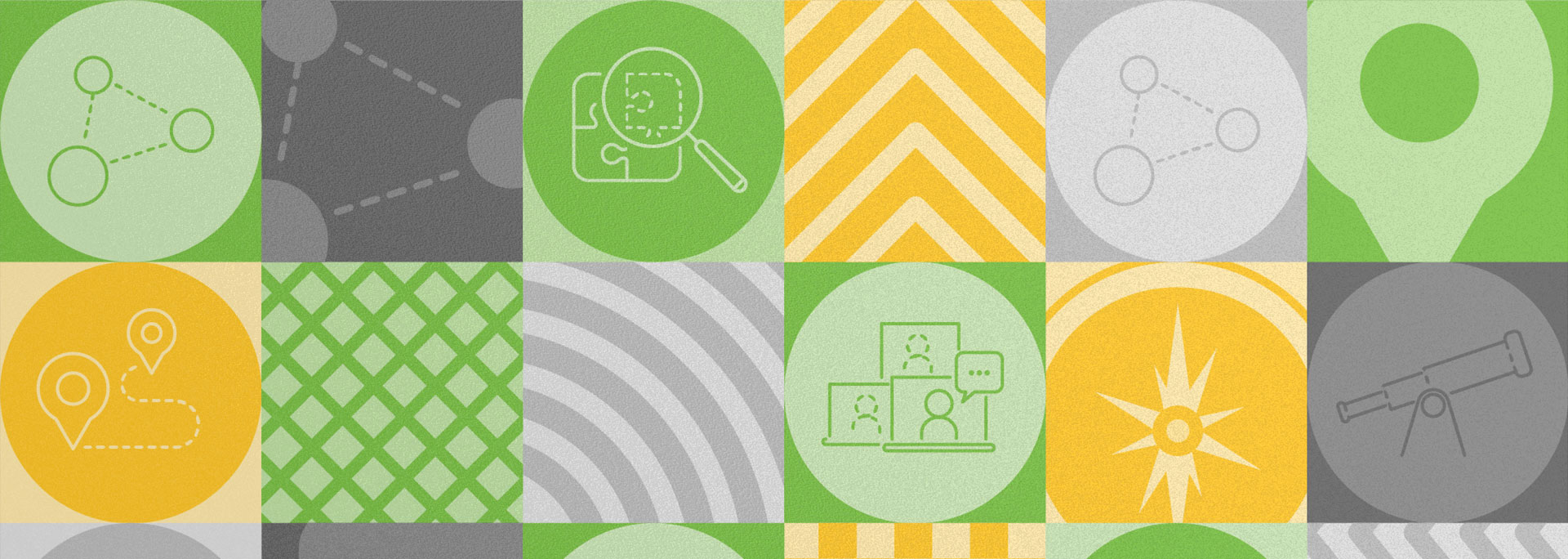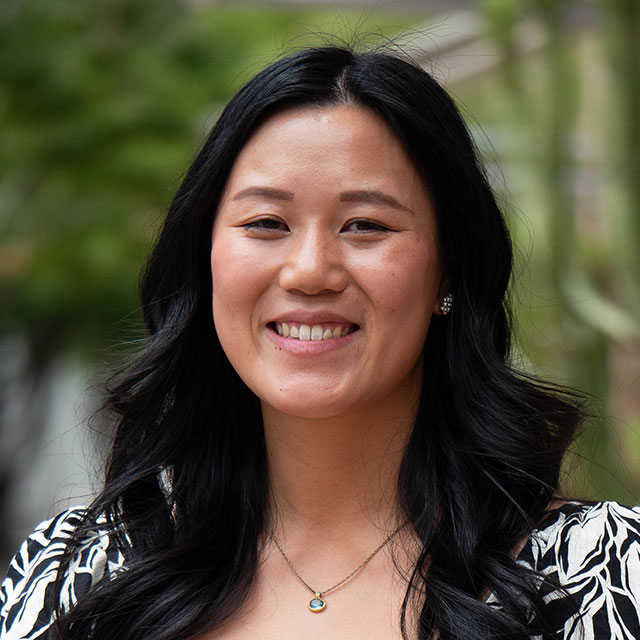At Kyrene de las Manitas Innovation Academy, colorful posters dot beige-painted walls. Square cubbies are stuffed with a vibrant array of backpacks. First-year teacher Estefany Serrano’s voice rises above a few excited gasps as she explains the lesson plans for her class’ reading of Shakespeare’s “A Midsummer Night’s Dream.” But unlike the classrooms you may be more familiar with, Serrano is not alone; she’s part of a team of six educators who share responsibility for a roster of 120 4th- and 5th-grade students.
“Being a first-year teacher in this specific team-based model, I don’t think there are any adjectives to describe the amount of gratefulness that I have just because I get to work with so many different people that give me so much feedback on a daily basis,” Serrano said. “I believe that I am growing 10 times more than I would in a regular traditional classroom because I get to see so many different perspectives and so many different opinions throughout my regular day.”
Serrano’s experiences are captured as part of the Next Education Workforce™ Virtual Site Visits. Created by the initiative at Arizona State University’s Mary Lou Fulton College for Teaching and Learning Innovation and available for free through the 2024-25 school year, the video-based web platform invites participants to watch innovative, team-based strategic school staffing models in action without the logistical and financial barriers that may prevent people from attending an in-person site visit.
Featuring the voices and experiences of educators, principals, superintendents, students and families, these videos shine a light on how team-based models are leading to positive outcomes for both educators and learners.
“Rather than being alone and feeling isolated and that it’s all on my shoulders, we’re all working together for the same goal because we all want our students to succeed, and we think that they can succeed, and, so, we are a team,” Courtney Nelson, a fellow teacher on Serrano’s team at Kyrene de las Manitas, said.
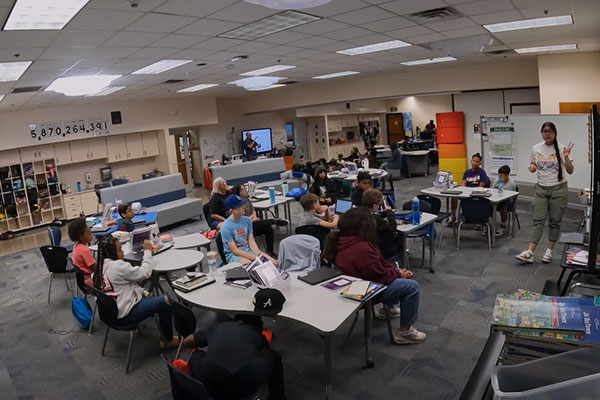
In addition to seeing how the three schools — Kyrene de las Manitas Innovation Academy, Westwood High School and Stevenson Elementary School — have designed and implemented team-based models, Virtual Site Visits offer behind-the-scenes content and context to team-based staffing that those attending in-person visits may not get to see. Lisa Wyatt, Next Education Workforce’s senior director for implementation and design, shared that she often gets asked by in-person site visit attendees to observe team planning time. However, before Virtual Site Visits, that hasn’t always been a viable option.
“As soon as 15 visitors walk in a room where teachers are planning, of course, conversation among the teachers stops. It’s hard to see the dynamics that truly emerge among a team and the safety and belonging and critical conversations that happen on teams. Some of the deep work that teams do is hard to see in person,” Wyatt explained. “I’m really excited to think about how the Virtual Site Visits videos may actually help to enrich the in-person site visit experience to make some of what’s happening more visible.”
Under the spotlight
There is no one-size-fits-all Next Education Workforce model. The diverse contexts, assets and needs of each school inform the design and implementation of each model, which is why Wyatt said seeing different schools’ work in action can be helpful for those trying to figure out how to implement team-based models.
“None of our site visits are intended to be, ‘Here’s exactly what you should do,’ but we do think and hope that they can provide inspiration for teams and leaders that are launching and implementing team-based models in their own contexts,” Wyatt said.
Located in Mesa, Ariz., Westwood High School enrolls 3,500 students in grades 9–12 and launched team-based models in 2018. At Westwood, teachers on the same team are located in close proximity to each other, share a roster of students and have dedicated collaborative planning time.
“The secret sauce, I think, is in our team planning,” Arianna Roemke, an English teacher at Westwood, said. “It’s not just that it’s … a group of teachers with the same kids. We’re all specifically targeting the same assignments and skills.”
This collaboration has not only led to the teachers feeling more supported and willing to try new things; it has also positively affected students.
“When the students see their teachers collaborating and showing excitement between the different disciplines, we’re bringing that joy back into the classroom. When the students see that joy … they’re gonna want to come in every day. They want to experience that,” said Westwood Principal Christopher Gilmore.
Also in Mesa Public Schools, Stevenson Elementary launched its first team in school year 2020-21 in 3rd grade. Now, all of its 720 students, from kindergarten through 6th grade, are supported by educators working in teams. The Virtual Site Visit focuses on the kindergarten team. At the beginning of the school year, four kindergarten teachers and two aides rotate between homerooms with pods of students in order to build better relationships with each of the students. Once both the students and teachers feel comfortable, they begin moving students to different classrooms and learning spaces.
Having a team-based staffing model allows educators at Stevenson to provide personalized learning opportunities for students based on both student choice and need. Instead of one teacher creating a lesson plan for their classroom, teams allow educators to dive deep into the data to understand where each student is doing well and where they could use additional support. For example, while one educator may be helping a group of students learn letter sounds, another educator may be teaching students how to read sight words.
“[Our students] know that they have a team of educators that are ready to support them, meet them where they are, that their needs are supported,” Mary Pierce, a teacher candidate at Stevenson Elementary School, said.
Meeting students where they’re at is something one Stevenson mom especially loves about how the school has approached teams. Her son was diagnosed with autism when he was about 2, and she shared that she was worried about how he would adjust to the social aspect of school when the time came. However, he’s “thriving” in his kindergarten year at Stevenson, and she’s seen him introduce himself to other kids and ask them to play with him — something that “you would have never seen out of him before.”
“Once we came to Stevenson, we had his first initial IEP meeting, and I came to the meeting and there was a team of seven people sitting at a desk. … Once they started talking, I was like, you could tell that every single person spent weeks getting to know him, evaluating him, learning how he learned, seeing his strengths, seeing his weaknesses,” she shared. “That was definitely like, OK, we’re in the right place.”
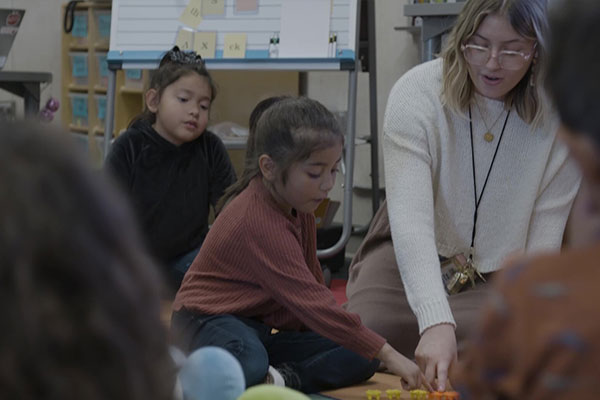
Back at Kyrene de las Manitas Innovation Academy, which launched team-based models in 2019 and enrolls around 450 students in grades pre-K–8, teams look different. While the teachers may sometimes gather all of the students in one group to go over the lesson, they may also divide the class to teach the same lesson in smaller groups or provide different learning activities based on student need or interest.
Team-based learning has given students more choices on where and how they learn. A classroom at Kyrene has desks in addition to spaces for students to stand or sit on bean bags, which, as one parent put it, is not an opportunity their daughter would have at a more conventional school.
“In the past, we’ve had a very generic standard set up with school, where she sits at a desk the majority of the day,” the parent shared. “Most of her learning culminates in some type of quizzing. This opportunity has allowed her to gain confidence and to really grow and to use her voice. It’s been a wonderful change.”
More learning ahead
Virtual Site Visits lay the groundwork for the Next Education Workforce Explore Experience, which is the first step in a typical one- to two-year journey to design and implement team-based school staffing models with ASU. This monthly offering invites system leaders, school leaders, educators and community members to consider if team-based models are the right approach for their school or system context. Virtual Site Visits pair with a 90-minute online session where attendees can talk to elementary and secondary educators and school leaders who have already launched team-based models in their own schools.
“In the past, the best that we’ve been able to do is try and have those people who’ve been to an in-person site visit go back and describe their experience. With Virtual Site Visits, our hope is that people who do see those team-based models in action can leverage the school videos as a way to have a shared, anchored experience. They can discuss what they’re seeing and brainstorm ideas for their own school context and what works for their community,” Wyatt said.
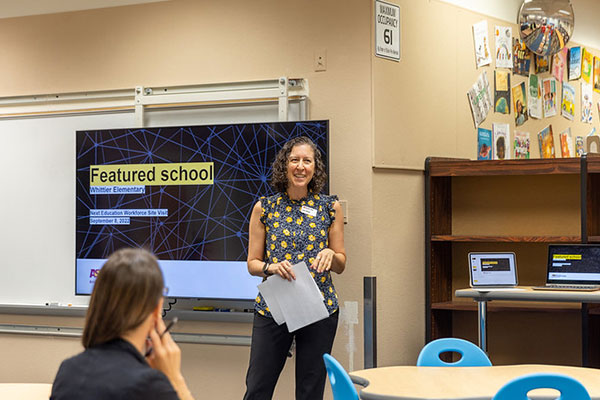
Whether the site visits are in person or captured on video, Wyatt said she wanted to express gratitude to the school partners who have welcomed visitors into their classrooms and schools.
“Our school partners know there’s more work to do, and there’s a lot of vulnerability around taking video of where they are at any moment in time,” Wyatt said. “I’m just so thankful for them and the thoughtfulness they have put into sharing their journey so we can learn with them.”
What do team-based strategic school staffing models look like in action?
With this video-based Virtual Site Visit, you can observe learning spaces and hear directly from educators, team leaders, school leaders and superintendents with team-based models.
How do Next Education Workforce models improve outcomes?
Explore ways that new and differentiated educator roles and responsibilities might influence outcomes.


